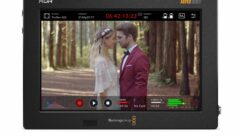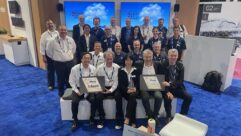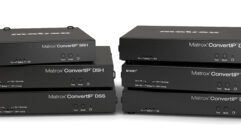
Video Review: Westinghouse Digital Electronics neonNow and neonSource
Jun 8, 2009 12:00 PM,
By Jeff Sauer
Software-and-player combination offers a professional-looking entry into basic digital signage.

I’m always a little skeptical when a hardware company tries its hand at software. Too often, the results seem like home-grown reinventions of the proverbial wheel. So when LCD-maker Westinghouse Digital first introduced the neonNow and neonSource digital signage software products last year, my first thought was, “Here we go again.” Yet I came away from an initial demonstration pleasantly surprised and eager to take a closer look.
Westinghouse Digital Electronics is now shipping both neon software products, along with a proprietary hardware neonPlayer, which are available bundled with specific LCD models as turnkey digital signage solutions and as standalone digital signage creation tools ($799 for each software application, $1,699 for the neonPlayer). Both applications fill an important niche as digital signage proliferates toward broader usage. For the most part, Westinghouse has a good start building its own, even if these new wheels aren’t perfectly round quite yet.
NeonNow and neonSource were originally designed to help jump-start the full-of-promise digital signage business. They were created to help Westinghouse take advantage of emerging interest in digital signage in order to sell more LCD panels. The objective for both applications was to create easy-to-use tools that would allow everyday business professionals—that is, those who are not creative design professionals—to build and update handsome digital signage messages and playlists.
NEONNOW
NeonNow is the more intuitive of the two applications, with a straightforward point-and-click approach that puts everything in front of the user. A preview window occupies the right side of the interface, while the left side essentially toggles between two different views.
The first of these views is the content library, which includes several design templates or backgrounds to which you can add text. Like typical PowerPoint slides, each has a larger header/title-text area and a body-text area. Click on one, and it automatically appears in the preview window. Type new text in the editor boxes, and your text immediately shows up in the same preview. NeonNow automatically, elegantly fades in background then text.
Your own logos, images, and videos populate the content-frame area, and clicking on any of these puts it in the preview window. Duration pulldown menus for hours, minutes, and seconds allow you to set the timing for each slide or image independently. Click the big green check box with anything in the preview window, and the interface mode changes with your new slide, image, or video already in the Content Wheel or timeline.
It’s called a wheel because it’s a vertically descending list of content with a browser-like scroll bar along the right side so you can spin and see your list, with text and duration for each clearly visible. You can toggle content up and down in the timeline to reorder, and when you’re satisfied, all you do is hit play. NeonNow takes over the full screen and plays your digital signage material. It’s that simple. What’s more, neonNow can be set to play content on a panel in landscape or portrait orientation.
Video Review: Westinghouse Digital Electronics neonNow and neonSource
Jun 8, 2009 12:00 PM,
By Jeff Sauer
Software-and-player combination offers a professional-looking entry into basic digital signage.
NEONSOURCE
Surprisingly, neonNow and neonSource are being developed by two separate design teams. There are a few superficial similarities in icons, but very little apparent effort to create a product family, and that’s too bad. NeonSource’s functionality goes beyond that of neonNow, and it could be a logical stepping stone as users become more sophisticated.
The most important difference with neonSource is MosaicView, which adds multiple-pane and text-overlay support. Admittedly, there are just two splitpane layouts from which to choose—a vertical banner either left or right—in addition to a full-window option, but you can add overlay text along the top, bottom, or either side of the image. A text editor allows you to slide the text in from any direction, although oddly, it cannot crawl all the way across the screen, meaning the messages have to be short or they will be cut off.
NeonSource’s timeline is a more traditional horizontal presentation, displaying the sequence order and total time (you can click on each slide or video to see its own duration in an information box in the upper-right corner of the interface). Here, you can reorder content by simply dragging and dropping. Adding new content is as easy as clicking on one of four content-type buttons, then choosing an image, text overlay, video clip, or a live video feed from the content library. It’s that last option that gives neonSource its name, and it’s a very flexible feature for signage that’s constantly running in a waiting room or public gathering place, for example.
On the other hand, there is no neonNow text editor in neonSource. You can import any kind of graphics, including text-based JPEGs of PowerPoint slides, but this is an area where the two development teams need to work together. Westinghouse says it plans to add more text support into neonSource in an upcoming release.
There are a few other caveats. Westinghouse Digital deserves kudos for keeping things simple, yet history shows that keeping it simple can’t mean keeping it under-featured. NeonNow needs basic font selection, and neonSource has bugs in its titling. Both need an easier way to import content and templates and, more importantly, a way to manage content. The simple scrolls are great, but after a month of adding new messages and images, those scrolls and unordered searches will get frustrating. NeonNow needs to either do a better job of resizing imported images or give users very specific instructions on sizes and formats of what can and cannot be used. Or both. Users should also be able to save projects and timelines so users can play ahead or have a weekend sequence that’s different from the weekday one.
Still, both products are usable now for basic digital signage messaging in a manner that appears very professional. With Westinghouse Digital planning to add many of the above features, as well as remote administration support, one can expect to grow as these tools do. Ultimately, they both fill a much-needed niche as digital signage reaches a broader audience. Admittedly, the cost of each feels like early pricing that will in time become discounted, yet it’s a small part of a digital signage infrastructure. And of course, Westinghouse Digital can deliver the entire solution and probably bundle the software at a pretty good price.
PRODUCT SUMMARY
- Company: Westinghouse Digital Electronics
dss.wde.com - Product: neonNow and neonSource
- Pros: Easy-to-use digital signage creation tools allow nontechnical users to build and update professional digital signage presentations; intuitive and simple interfaces.
- Cons: Early version software omissions; need easier way to import and manage content.
- Applications: Any basic digital signage application where budget is key.
- Price: $799 (neonNow or neonSource); $1,699 (neonPlayer)
SPECIFICATIONS
neonNow and neonSource:
- Supported formats: JPEG; PNG; MPEG-1, -2, and -4; H.264; AVI; WMV; SWF
- Output resolution: 1920×1200
neonPlayer M470SWP:
- Operating system: Windows XP Embedded
- Output resolution: 1920×1200
- Video outputs: 15-pin VGA, HDMI
- Video input: 3xRCA component (480i/p)
- Audio inputs: Stereo RCA, SPDIF
- Hard drive: 160GB 7200rpm SATA2
- Dimensions: 11.8”x2.5”x9.4”
- Weight: 7lbs.
- Warranty: One year parts and labor










